#Art #Deco #Style #Interior #Design #Timeless #Blend #Elegance #Luxury
Art Deco style interior design is a timeless aesthetic that exudes elegance, luxury, and modern sophistication. Originating in the early 20th century, during the 1920s and 1930s, Art Deco was more than just a design movement; it was a bold statement of modernity, embracing new materials, bold geometry, and rich ornamentation. Whether you’re designing an entire home or simply incorporating a few key elements, the Art Deco style offers a unique opportunity to transform any space into a visual masterpiece.
In this post, we’ll explore the key elements of Art Deco style interior design, its rich history, and some practical tips on how to incorporate this glamorous aesthetic into your own space.
The Origins of Art Deco Style

The Art Deco movement first gained popularity in France after World War I. Notably, it was named after the 1925 International Exhibition of Modern Decorative and Industrial Arts in Paris (Exposition Internationale des Arts Décoratifs et Industriels Modernes). This period marked a significant shift in design philosophy, moving away from the ornate and elaborate details of previous eras like Victorian and Art Nouveau styles.
In contrast, Art Deco embraced modernism, technology, and luxury. It reflected a society eager to break away from the past and symbolized progress, innovation, and optimism for the future. Bold shapes, clean lines, and geometric patterns quickly became defining features of this style.
Key Features of Art Deco Style Interior Design
Art Deco design has distinct characteristics that make it easy to identify. Below are some of the key features that you’ll typically find in an Art Deco-style interior:
1. Bold Geometric Shapes
One of the most defining characteristics of Art Deco is the use of bold geometric patterns. For instance, zigzags, chevrons, trapezoids, and sunburst motifs are commonly used throughout Art Deco interiors. These shapes frequently appear in furniture design, wallpaper patterns, and decorative accents, giving spaces a sense of order and rhythm.
For example, an Art Deco sideboard might feature inlaid wood with contrasting geometric patterns, while a mirror may have a sunburst design, creating a striking focal point on a wall.
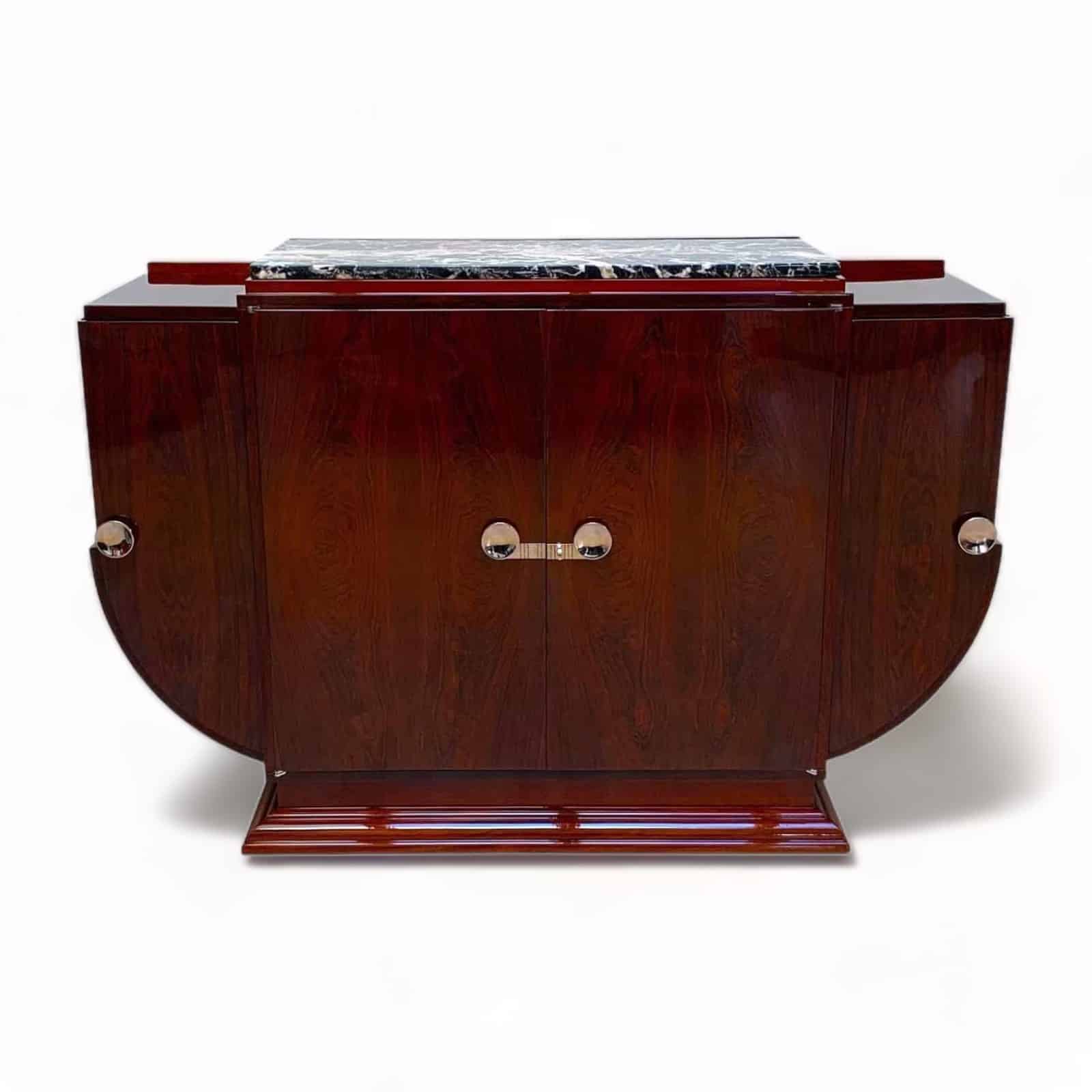

2. Luxurious Materials
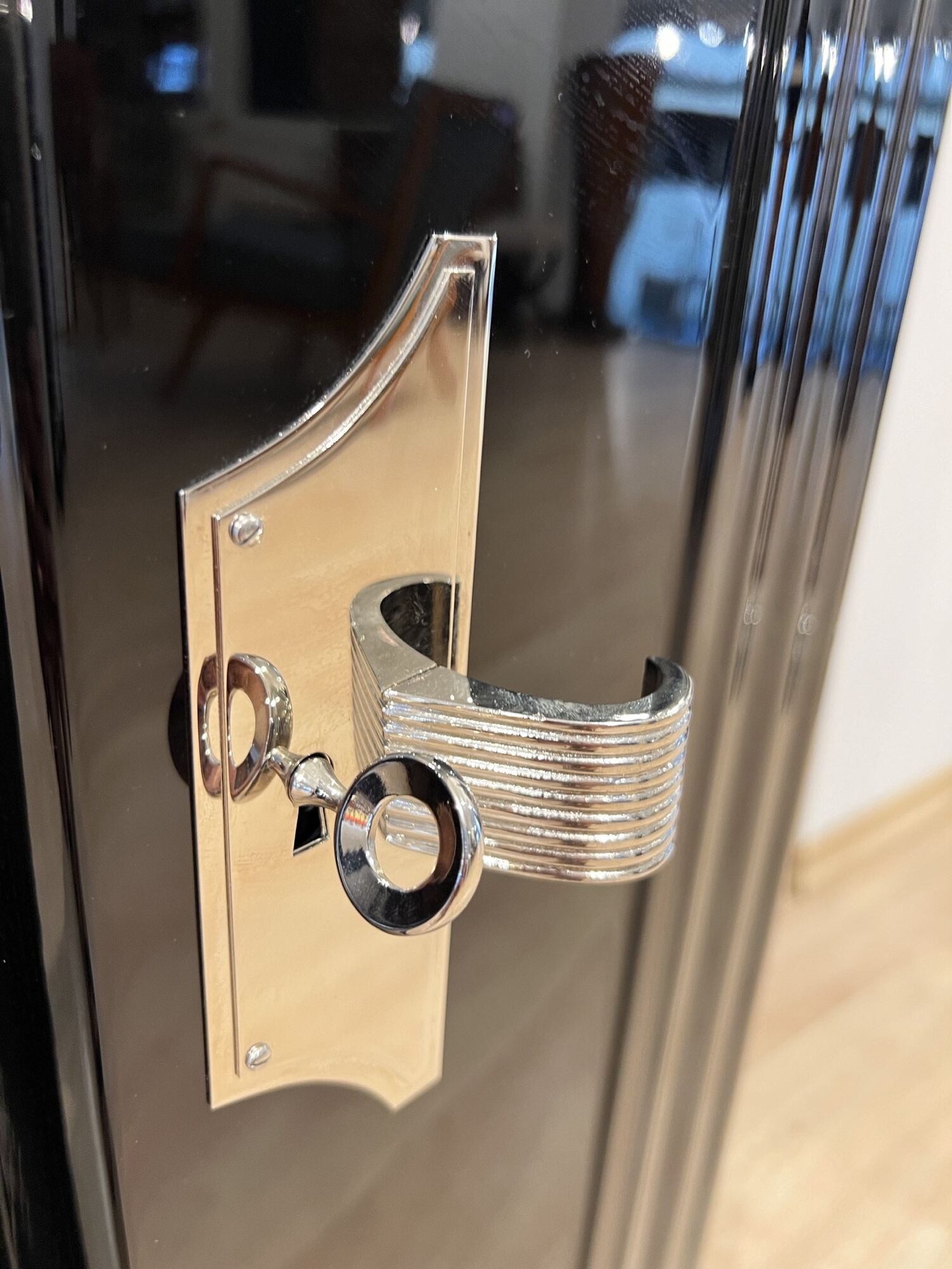

Equally important, Art Deco is synonymous with luxury, and the materials used in this design style reflect that. Rich woods such as ebony, mahogany, and walnut were often used for furniture, paired with sleek lacquer finishes. Additionally, Art Deco design embraced new materials like chrome, stainless steel, and glass, all of which were seen as symbols of modernity.
For upholstery, velvet, leather, and silk were frequently used to add texture and opulence. Marble and granite were common choices for flooring and countertops, further elevating the space with their rich, natural beauty.
3. Rich, Saturated Colors
Another notable feature of Art Deco interiors is the bold and sophisticated color palette. You’ll often see deep, saturated hues such as emerald green, royal blue, ruby red, and mustard yellow. These rich colors create a striking contrast when paired with black, white, and metallic accents, which are often used to add depth and drama to a room.
Moreover, metallics such as gold, silver, and brass are signature elements of Art Deco design. Gold-leaf accents on furniture, silver lighting fixtures, or brass detailing in mirrors and decorative accessories can all bring an Art Deco room to life.
4. Streamlined and Symmetrical Designs
Unlike the flowing and intricate designs of the Art Nouveau period, Art Deco is all about symmetry and streamlined forms. Therefore, furniture and decorative elements typically feature clean, sleek lines and a strong sense of balance. The emphasis is on simplicity, with elegant proportions and minimal ornamentation.
You’ll notice this streamlined aesthetic in everything from Art Deco sofas to lighting fixtures, which tend to have strong, straight lines and understated details.


5. Statement Lighting
In any Art Deco interior, lighting plays a key role. Chandeliers, sconces, and table lamps are often designed as statement pieces. Many feature bold geometric patterns and luxurious materials like frosted glass, chrome, and brass.
In particular, one popular lighting feature is the use of tiered, cascading shapes that create a sense of movement. Not only do these pieces provide illumination, but they also serve as works of art, adding drama and sophistication to a room.
How to Incorporate Art Deco Style into Your Home
Bringing Art Deco style into your home doesn’t necessarily require a complete renovation. You can start by incorporating a few key elements to achieve that signature look. Below are some practical tips on how to introduce Art Deco design into your space:
1. Choose Statement Furniture
To begin with, Art Deco furniture is known for its bold designs and luxurious finishes. Look for pieces with clean lines, geometric patterns, and rich materials. For example, a sideboard with a lacquered finish or a velvet-upholstered sofa with chrome legs can instantly elevate a room.
Additionally, don’t be afraid to mix materials. Art Deco design thrives on the contrast between hard and soft elements. Therefore, pairing a glass coffee table with a plush velvet armchair can create an exciting dynamic in your space.
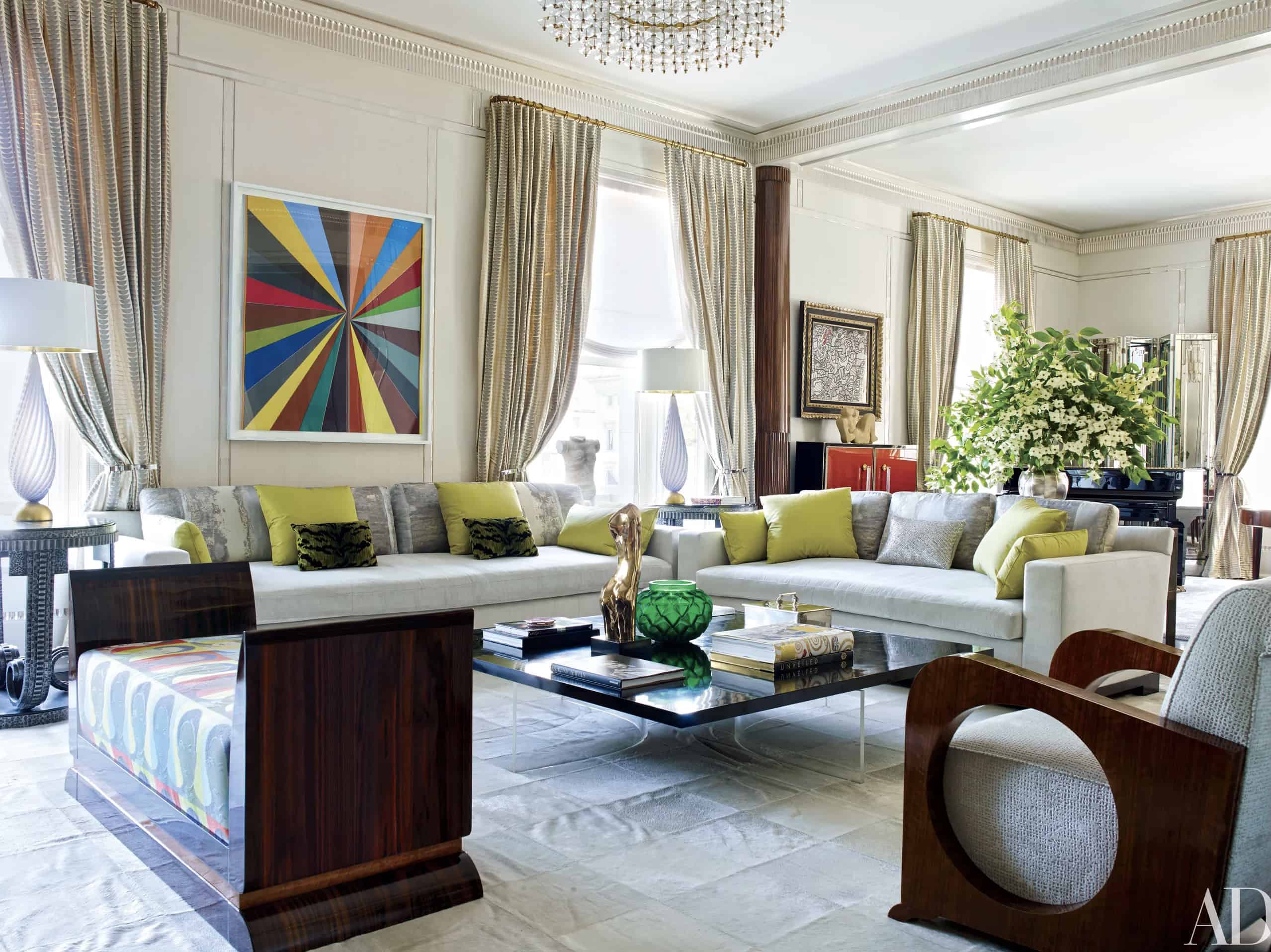

2. Incorporate Geometric Patterns
As mentioned earlier, geometric patterns are central to Art Deco design. You can introduce these motifs through wallpaper, rugs, or even decorative cushions. Consider zigzags, chevrons, or sunburst designs to add visual interest to your interiors.
If you’re not ready to commit to bold patterns on your walls, start small with geometric accessories or an area rug featuring Art Deco-inspired designs.
3. Add Metallic Accents
Metallic finishes are essential for creating an authentic Art Deco interior. Consider incorporating gold, silver, or brass accents through mirrors, picture frames, lighting fixtures, or furniture details. For instance, a gold-framed mirror or a set of chrome table lamps can instantly elevate the look of any room.
However, be mindful not to overdo it. While metallics are a hallmark of Art Deco, they should be used sparingly to avoid overwhelming the space.
4. Opt for Rich, Bold Colors
To truly capture the essence of Art Deco, choose a color palette that includes deep, rich hues like emerald green, royal blue, or burgundy. These colors, when paired with neutrals or metallics, bring sophistication and drama to any room.
You can introduce these bold colors through wall paint, upholstered furniture, or accessories like cushions and throws.
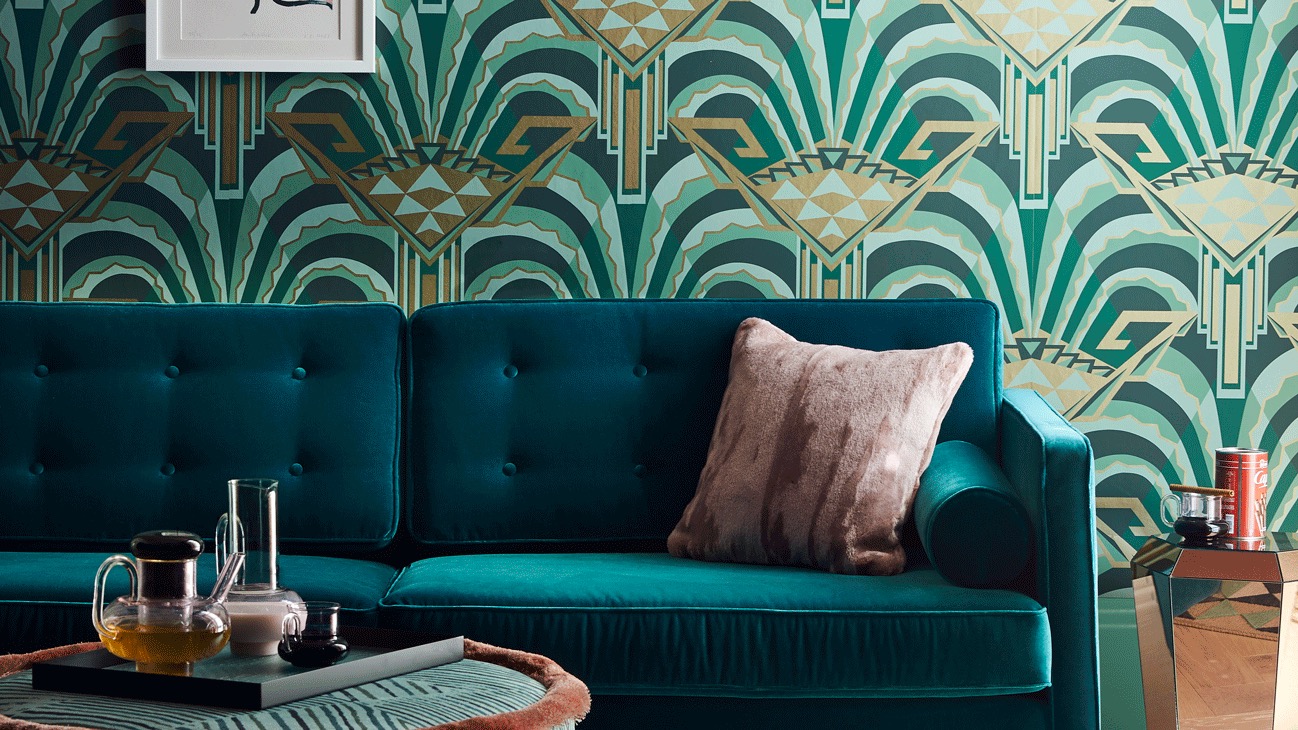

5. Focus on Statement Lighting
Lighting is not just functional in an Art Deco home—it’s also a key design feature. Look for chandeliers, floor lamps, or sconces with sleek lines, tiered designs, and luxurious materials like frosted glass and chrome. The right lighting can transform your space into a glamorous, inviting environment.
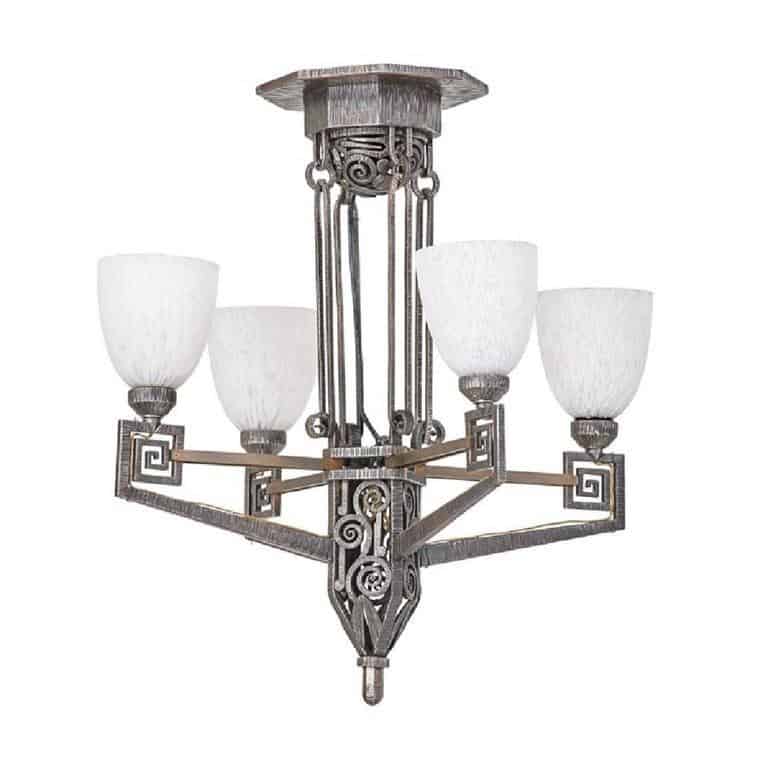

Conclusion
In summary, Art Deco style interior design offers a unique blend of bold geometry, luxurious materials, and timeless elegance. Whether you’re looking to completely transform a space or simply add a touch of glamour, the principles of Art Deco can bring sophistication and style to any interior.
By incorporating statement furniture, rich colors, geometric patterns, and metallic accents, you can easily achieve an Art Deco-inspired look that feels both modern and classic. Whether you go all-in or introduce a few key pieces, the elegance of Art Deco will leave a lasting impression on your home.


